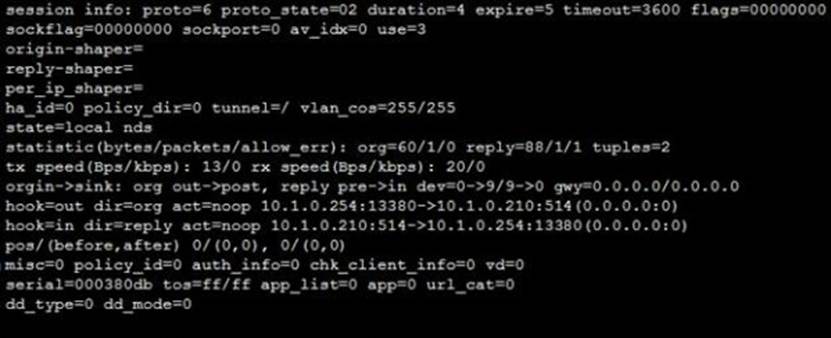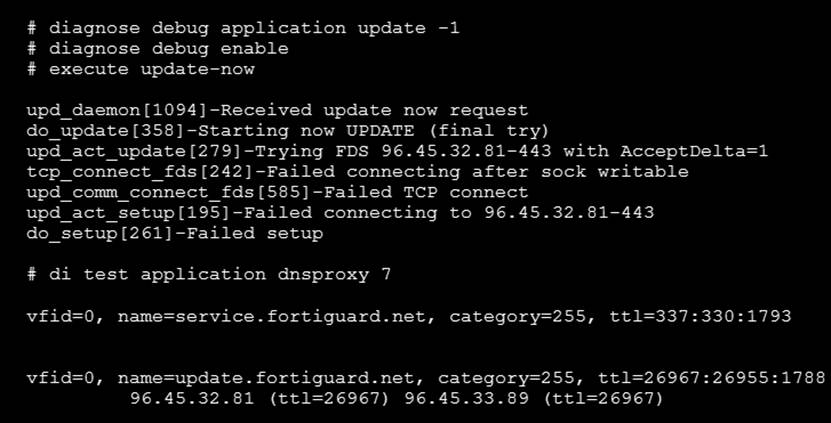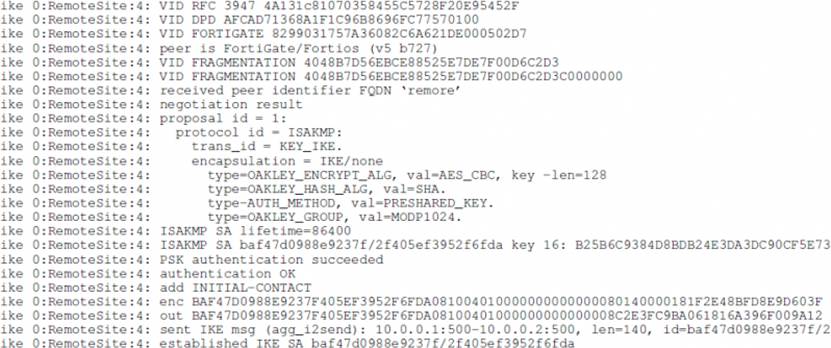Practice Free FCSS_EFW_AD-7.4 Exam Online Questions
An administrator must enable direct communication between multiple spokes in a company’s network. Each spoke has more than one internet connection.
The requirement is for the spokes to connect directly without passing through the hub, and for the links to automatically switch to the best available connection.
How can this automatic detection and optimal link utilization between spokes be achieved?
- A . Set up OSPF routing over static VPN tunnels between spokes.
- B . Utilize ADVPN 2.0 to facilitate dynamic direct tunnels and automatic link optimization.
- C . Establish static VPN tunnels between spokes with predefined backup routes.
- D . Implement SD-WAN policies at the hub to manage spoke link quality.
B
Explanation:
ADVPN (Auto-Discovery VPN) 2.0is the optimal solution for enablingdirect spoke-to-spoke communicationwithout passing through the hub, while also allowingautomatic link selectionbased on quality metrics.
#Dynamic Direct Tunnels:
# ADVPN 2.0 allowsspokes to establish direct IPsec tunnels dynamicallybased on traffic patterns, reducing latency and improving performance.
# Unlike static VPNs, spokes do not need to pre-configure tunnels for each other.
# ADVPN 2.0monitors the qualityof multiple internet connections on each spoke.
# It automatically switches to the best available connection when the primary linkdegrades or fails.
# This is achieved by dynamically adjusting BGP-based routing or leveraging SD-WAN integration.
An administrator must enable direct communication between multiple spokes in a company’s network. Each spoke has more than one internet connection.
The requirement is for the spokes to connect directly without passing through the hub, and for the links to automatically switch to the best available connection.
How can this automatic detection and optimal link utilization between spokes be achieved?
- A . Set up OSPF routing over static VPN tunnels between spokes.
- B . Utilize ADVPN 2.0 to facilitate dynamic direct tunnels and automatic link optimization.
- C . Establish static VPN tunnels between spokes with predefined backup routes.
- D . Implement SD-WAN policies at the hub to manage spoke link quality.
B
Explanation:
ADVPN (Auto-Discovery VPN) 2.0is the optimal solution for enablingdirect spoke-to-spoke communicationwithout passing through the hub, while also allowingautomatic link selectionbased on quality metrics.
#Dynamic Direct Tunnels:
# ADVPN 2.0 allowsspokes to establish direct IPsec tunnels dynamicallybased on traffic patterns, reducing latency and improving performance.
# Unlike static VPNs, spokes do not need to pre-configure tunnels for each other.
# ADVPN 2.0monitors the qualityof multiple internet connections on each spoke.
# It automatically switches to the best available connection when the primary linkdegrades or fails.
# This is achieved by dynamically adjusting BGP-based routing or leveraging SD-WAN integration.
View the following exhibit:

What two statements about this session are correct? (Choose two.)
- A . It is a UDP session that has seen traffic flow both ways.
- B . This is a TCP session that was blocked by firewall policy ID 0.
- C . This session terminates or originates in the FortiGate device.
- D . It is a TCP session in SYN_SENT state.
What is an OSPF area border router?
- A . A router with interfaces in multiple OSPF areas.
- B . A router with all its interfaces in the backbone area.
- C . A router that is redistributing connected subnets into the OSPF network.
- D . A router that is redistributing non-OSPF routes into the OSPF network.
A FortiGate is rebooting unexpectedly without any apparent reason.
What troubleshooting tools could an administrator use to get more information about the problem? (Choose two.)
- A . Firewall monitor.
- B . Policy monitor.
- C . Logs.
- D . Crashlogs.
Which security feature is most commonly enabled on DCFW firewalls to protect servers in a data center?
- A . Application control
- B . IPS
- C . Antivirus
- D . Web filtering
View the exhibit, which contains the output of a real-time debug, and then answer the question below.

Which one of the following statements describes why the update is failing?
- A . The update should be using port 53 or port 8888, instead of port 443.
- B . FortiGate is unable to resolve the required FQDN (service.fortiguard.net) for AV and IPS updates.
- C . FortiGate is unable to establish a TCP connection with FDS.
- D . The administrator should use the execute update-wf command instead.
Which two statements about FortiManager is true when it is deployed as a local FDS? (Choose two.)
- A . It supports rating requests from both managed and unmanaged devices.
- B . It caches available firmware updates for unmanaged devices.
- C . It can be configured as an update server, or a rating server, but not both.
- D . It provides VM license validation services.
An administrator is configuring ADVPN in a hub-and-spoke topology. The administrator will use IBGP to route traffic between the VPN sites.
Which IBGP setting needs to be enabled on the hub, for dynamic routing to work properly for on-demand tunnels?
- A . route-reflector-client
- B . next-hop-self
- C . route-server-client
- D . ibgp-multipath
View the exhibit, which contains the partial output of an IKE real-time debug, and then answer the question below.
![]()

Which statements about this debug output are correct? (Choose two.)
- A . The remote gateway IP address is 10.0.0.1.
- B . It shows a phase 1 negotiation.
- C . The negotiation is using AES128 encryption with CBC hash.
- D . The initiator has provided remote as its IPsec peer ID.
